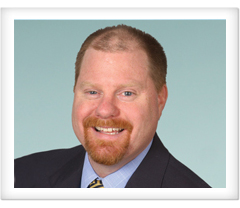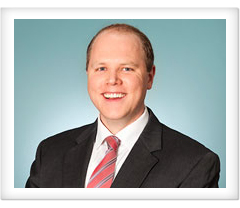| |
 Alerts & Advisories Alerts & Advisories
 Industry Reports & Newsletters Industry Reports & Newsletters
 Published Articles Published Articles
 Social Media & Blogs Social Media & Blogs
 Brochures Brochures

|
 |
Intellectual Property Alert
A “Solution” in Search of a Problem?
The Innovation Act of 2015 and Trends in Fee-shifting in Patent Litigation
03.13.2015
By Michael Renaud, Peter Snell, Jack Schecter and Robert Moore
On February 5, 2015, Rep. Robert Goodlatte (R-VA) introduced H.R. 9, entitled the “Innovation Act.” Among other things, the bill would direct courts to award attorneys’ fees and litigation-related expenses to prevailing parties absent a finding that “the position and conduct of the nonprevailing party or parties were reasonably justified in law and fact or that special circumstances (such as severe economic hardship to a named inventor) make an award unjust.” Creating a presumption in favor of fee-shifting may well discourage some patent owners from asserting their patents. However, it is unclear that codifying such a measure is necessary to realize the bill’s goal of curbing patent abuse. At the same time, as currently drafted, the bill would not impede some of the worst examples of patent abuse.
Courts already have the authority to penalize parties bringing non-meritorious claims of patent infringement and to compensate those parties unjustly targeted by such claims. Per Federal Rule of Civil Procedure 54(d), “costs … should be allowed to the prevailing party” post-judgment. In addition, 35 U.S.C. § 285 already provides that a “court in exceptional cases may award reasonable attorney fees to the prevailing party[.]” Even before the April 2014 Supreme Court opinion in Octane Fitness, LLC v. Icon Health & Fitness, trends favored more frequent awards of attorneys’ fees to the prevailing party in patent litigation, signaling that existing mechanisms already have the effect of combating abusive patent litigation.
Patent infringement claims that survive through the pleading stage, discovery, and dispositive motions are, by and large, already battle tested. The fact of their survival speaks at least to some extent to their merits and that Congress should not seek to penalize those having brought those claims to begin with. Prior to litigation, patent plaintiffs bear the burden and expense of conducting a reasonable investigation of their infringement theories and thereby forming a basis for the allegations under Federal Rule of Civil Procedure 11. The Federal Rules also provide mechanisms by which the targets of non-meritorious allegations can obtain dismissal of such claims before discovery, and if not then, after claim construction or at the summary judgment stage. Those claims that remain through discovery have generally been found legally cognizable as pleaded, suggesting that such claims are not of the sort that should warrant Congressional action.
Moreover, the bill focuses on shifting litigation fees and costs, to the exclusion of the most obvious and glaring examples of patent abuse, which occur pre-suit. For instance, while the bill states that “it is an abuse of the patent system and against public policy for a party to send out purposefully evasive demand letters to end users alleging patent infringement[,]” and while the bill seeks to increase the sanctions one might face when litigating in the wake of such demand letters, a patent owner engaged in such questionable practices would face the desired reckoning only in the event that it opted to litigate its infringement allegations. The Act would do nothing to prohibit patent holders with no intention or reasonable basis for bringing an infringement claim from sending unsophisticated entities non-meritorious demand letters en masse and collecting an aggregate of nuisance license fees from the naïve few – perhaps the epitome of “patent abuse.”
Though once a rare occurrence, the past several years have seen courts grant an increasing number of motions for fees associated with patent litigation. In 2012, parties in district court patent matters moved for attorneys’ fees one hundred twenty-four (124) times, prevailing at least in part 35% of the time. By 2014, the number of such motions had increased by 66%, to two hundred six (206). These motions were granted at a similar rate – 37% – to the 2012 motions, resulting in an 85% increase in the number of granted motions for fees over this two-year span.


Source: DocketNavigator

Under Octane Fitness, this trend promises to continue or even accelerate, with or without the passage of the Innovation Act. There, the Supreme Court unanimously overturned the Federal Circuit’s Brooks Furniture Mfg. v. Dutailier standard for finding a case is exceptional and therefore justifying an award of attorneys’ fees under 35 U.S.C. § 285. Under the old Federal Circuit test, a case was “exceptional” only where the party from which fees were sought engaged in sanctionable litigation-related misconduct “in subjective bad faith,” and/or where said party’s litigation positions were “objectively baseless.” The Supreme Court read no such test into the statute and returned to the district court the discretion to award fees based on “a totality of the circumstances.”
As discussed, the Innovation Act would create a presumption in favor of fee-shifting. Over and above its attempt to serve as an overall deterrent to abusive litigation, the Act’s implementation of fee-shifting could have wide-ranging consequences for the field.
Notably, the Innovation Act would amend 35 U.S.C. § 285 to provide for joinder of interested third-parties to satisfy an award of fees. In other words, the bill would render third-parties with an interest in a patent assertion program liable for attendant attorneys’ fees awards to the extent that the asserting entity is unable to satisfy the award. This could adversely affect the available avenues through which patent owners, including small inventors, universities, and start-up practicing entities, can enforce their patents. This provision of the Act may be aimed at non-practicing entities (“NPEs”) that purchase patents from a seller and embark on an assertion program, with proceeds divided among the NPE and the seller, but swept in are the small inventors, universities, and start-up practicing entities that cannot afford the significant costs – including, potentially, fee awards – associated with bringing an action to enforce their patent rights. Those lacking the financial backing to absorb those costs would be effectively barred, or limited, in their options to bring infringement actions, leaving only established players with the wherewithal to prosecute infringement claims.
The Innovation Act would also amend 35 U.S.C. § 285 to add a provision that would treat a patent plaintiff’s offer of a covenant-not-to-sue during the course of litigation as a judgment against it, thus triggering the presumptive liability for attorneys’ fees, unless that party could have voluntarily dismissed its claims at the time of the offer. This provision would essentially eliminate the practice of patent owners litigating non-meritorious infringement claims until they encounter a prepared and determined litigant, then offering a covenant-not-to-sue to avoid litigation outcomes (e.g., adverse claim constructions, invalidity, or noninfringement findings) that could negatively impact other claims and liability under Section 285. However, by removing a commonly used option for resolution of patent cases, it is unclear what affect this provision would have on the ability of parties to resolve their cases through alternative dispute resolution. If, in fact, the mere offer of a covenant-not-to-sue is perceived to create risk that a patent plaintiff may be liable for fees, this provision of the Act may have a chilling effect on settlement.
Proponents of the Innovation Act point to statistics regarding the expense associated with litigating claims of infringement. However, from the accused infringer’s perspective, the lion’s share of expense is incurred after the pleading stage of litigation. The Federal Rules of Civil Procedure impose restrictions on patent owners’ abilities to bring infringement actions and provide mechanisms for early adjudication of non-meritorious claims. This calls into question whether there is any need for a presumption in favor of fee-shifting.
Under Rule 11, a patent plaintiff must perform a reasonable investigation as to its infringement allegations and defendants can raise a challenge under this rule if they believe this obligation has not been met. Rule 12 also provides bases for a party accused of infringement to challenge the allegations prior to discovery. The effect of these Rules is to winnow out a significant number of claims that lack support. The number of patent infringement complaints brought in 2014 decreased by nearly 20% from the preceding year, from 5,394 to 4,383. Presumably the decrease left a group of filings that were, as a whole, more meritorious than the preceding year’s. Even so, the number of complaints dismissed by unassented-to motion before discovery was flat, signaling that the ability for defendants to dispose of non-meritorious claims is alive and well. 2013 saw 1,077 such motions ― motions to dismiss for lack of standing; lack of subject matter jurisdiction; lack of personal jurisdiction; improper venue; failure of process; failure of service of process; failure to plead with particularity; failure to state a claim; failure to join an indispensable party; and failure to prosecute; any other unassented‑to motions to dismiss; and motions for judgment on the pleadings. Of those 1,077, 41% were granted at least in part. In 2014, accused infringers filed 1,001 such motions – a decrease of just 66, or 6%, from the previous year. Courts granted a slightly higher percentage of these motions ― 43% ― in 2014. Source: DocketNavigator.
In view of the statistics showing that litigants already have mechanisms to dispose of non-meritorious litigation, and the existing avenues for litigations to obtain fee awards in appropriate situations, the public policy imperative for the Innovation Act is not apparent.
The likelihood that the Innovation Act will become law is uncertain, though its chances of passage are better than those of its virtually identical predecessor from 2013, H.R. 3309. That bill, after passage by the House of Representatives, failed to make it out of Senate committee. The relatively meager turnover in the House since voting on the last bill suggests that passage by the House of this version is possible. Whether the Senate will act on, let alone pass, this bill, though, remains unknown, even given the change in Senate leadership since the last bill. Finally, while President Obama has in the past, notably in his 2014 State of the Union Address, indicated support for the general idea of reforming the patent system to reduce litigation, whether he will sign into law a version of the Innovation Act that manages to pass both Houses of Congress will largely depend on the precise contours of the bill with which he is presented.

If you have any questions about this topic, please contact the authors or your principal
Mintz Levin attorney.

|
|

Michael T. Renaud, Member

Peter F. Snell, Member

Jack C. Schecter, Of Counsel

Robert J. Moore, Associate

Related Practices

Related Industries

Related Blogs
|
|